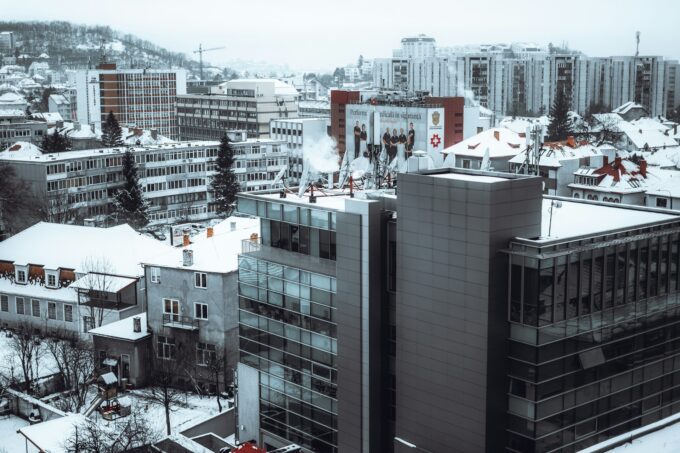Sewer line problems can be a major headache for any property owner. From backups and slow drains to foul odors and soggy lawns, the signs of a failing pipe are hard to ignore.
For decades, the go-to solution involved digging up large portions of your property to access and replace the damaged pipes. This traditional method, while effective, is also disruptive, time-consuming, and often expensive.
Fortunately, advancements in plumbing technology have introduced a far less invasive and more efficient alternative: Cured-in-Place Pipe (CIPP) lining. This innovative technique for pipe rehabilitation has revolutionized the way we approach sewer repair, offering a “no-dig” solution that restores pipes from the inside out.
Understanding the differences between these two approaches is key to making an informed decision for your property. This guide will compare CIPP sewer repair with traditional dig-and-replace methods, examining factors like cost, durability, and the overall repair process.
By exploring the pros and cons of each, you can determine the best course of action for your specific situation and ensure the long-term health of your plumbing system.
The Traditional Approach: Dig-and-Replace
The traditional method of sewer repair is exactly what it sounds like. It involves excavating a trench to physically expose the damaged section of the pipe. Once the pipe is accessible, plumbers can perform the necessary repairs or replace the entire section.
The Repair Process
The dig-and-replace process is a significant undertaking that follows several key steps:
- Locating the Damage: A sewer camera inspection is performed to pinpoint the exact location and nature of the problem, whether it’s a crack, root intrusion, or a collapsed section.
- Excavation: Heavy machinery, like backhoes, is used to dig a trench from the ground surface down to the damaged pipe. This often means disrupting landscaping, driveways, or patios.
- Pipe Repair or Replacement: The damaged portion of the pipe is cut out and replaced with new material, such as PVC or cast iron.
- Backfilling and Restoration: Once the new pipe is in place and tested, the trench is filled back in. The final step involves restoring the surface, which could mean replanting grass, repaving a driveway, or rebuilding a walkway.
Advantages and Disadvantages
While invasive, the traditional method has its place. It allows for the complete replacement of a severely damaged or collapsed pipe, ensuring a brand-new line is installed. However, the drawbacks are considerable and often outweigh the benefits for many property owners.
- Pros:
- Effective for completely collapsed or severely deteriorated pipes.
- Allows for upsizing the pipe diameter if needed.
- Cons:
- Highly disruptive to property and landscaping.
- Time-consuming, often taking several days to complete.
- Labor-intensive, leading to higher costs.
- Requires extensive surface restoration, adding to the overall expense.
The Modern Solution: CIPP Lining
Cured-in-Place Pipe (CIPP) is a trenchless technology that rehabilitates existing pipes without the need for extensive digging. This method creates a new, seamless pipe within the old one, effectively sealing cracks, bridging gaps, and preventing future root intrusion.
The CIPP Process Explained
The CIPP process is streamlined and minimally invasive, making it an attractive option for pipe rehabilitation.
- Pipe Cleaning: The first step is to thoroughly clean the existing pipe using high-pressure water jetting to remove debris, roots, and scale buildup.
- Liner Insertion: A flexible, resin-saturated felt liner is inserted into the damaged pipe through an existing access point, like a cleanout. The liner is then inflated using air or water pressure, pressing it firmly against the walls of the host pipe.
- Curing the Resin: The resin in the liner is cured, or hardened, using hot water, steam, or UV light. This process creates a rigid, durable new pipe inside the old one.
- Final Inspection: After the liner has cured, the access points are re-established, and a final camera inspection is conducted to ensure the rehabilitation was successful.
The Clear Benefits of CIPP
CIPP lining offers a host of advantages over traditional methods, making it the preferred choice for a wide range of sewer pipe issues.
- Pros:
- Minimal Disruption: No large trenches are needed, preserving your lawn, garden, and hardscape.
- Cost-Effective: Reduced labor and no restoration costs make it significantly more affordable.
- Time-Efficient: Most CIPP projects can be completed in a single day.
- Durable and Long-Lasting: The resulting pipe is seamless, joint-free, and resistant to corrosion and root intrusion, with a life expectancy of 50 years or more.
- Improved Flow: The smooth interior surface of the new pipe can actually improve flow capacity.
Making the Right Choice for Your Property
So, how do you decide which method is right for you? The choice between CIPP lining and traditional dig-and-replace repair ultimately depends on the condition of your pipes and your specific needs.
- Choose CIPP if: Your pipes have cracks, leaks, root intrusion, or corrosion but are still structurally intact. This method is ideal for property owners who want a fast, cost-effective, and non-disruptive solution.
- Choose Traditional Repair if: Your pipe has completely collapsed, is severely offset, or has a significant back-pitch (improper slope). In these extreme cases, excavation may be the only way to correct the problem.
Frequently Asked Questions About Pipe Repair
How long does CIPP lining last?
A properly installed Cured-in-Place Pipe has a design life of at least 50 years. The seamless and corrosion-resistant nature of the material ensures a long-term solution.
Is CIPP lining safe for my property and the environment?
Yes, the resins used in CIPP are stable and safe once cured. The trenchless nature of the process also has a much smaller environmental footprint compared to excavation, as it avoids soil disruption and reduces the need for heavy machinery.
Can CIPP be used on any type of pipe?
CIPP is incredibly versatile and can be used to rehabilitate a wide range of pipe materials, including cast iron, clay, PVC, and concrete. It can also navigate pipes with bends and changes in diameter.
Will I have to move out of my house during the repair?
For most residential CIPP projects, homeowners do not need to vacate their homes. Water service may be temporarily shut off during the process, but the work is typically completed within a few hours to a day, minimizing inconvenience.
Take the Next Step
When faced with sewer problems, knowing your options is the first step toward a lasting solution. While traditional dig-and-replace methods have been the standard for years, modern trenchless technologies like Cured-in-Place Pipe offer a superior alternative in many cases.
By providing a durable, non-disruptive, and cost-effective method for pipe rehabilitation, CIPP is changing the game for property owners.If you are experiencing sewer line issues, contact a qualified plumbing professional to conduct a thorough inspection.
They can assess the condition of your pipes and help you determine if CIPP lining is the right choice for your home. Don’t let the fear of a torn-up yard prevent you from addressing a critical plumbing problem. Learn more about how trenchless technology can restore your peace of mind and your pipes.














